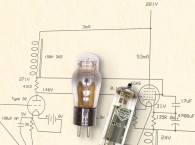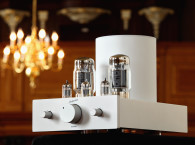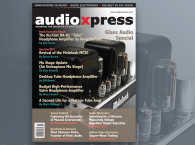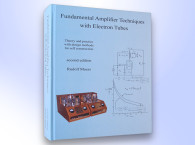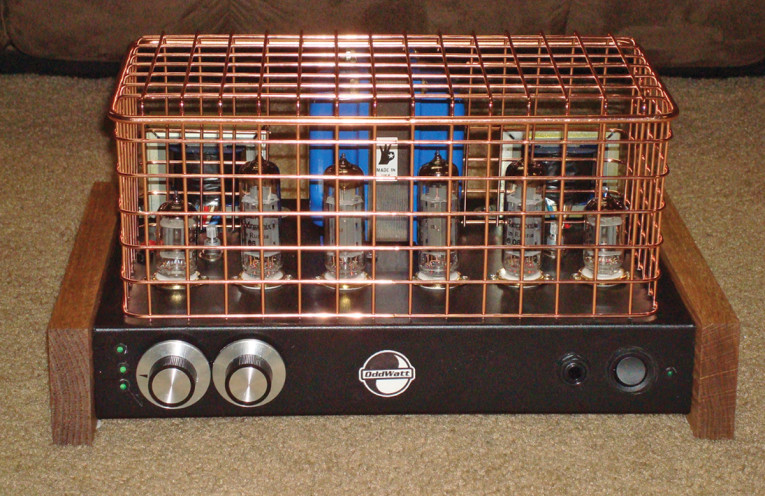
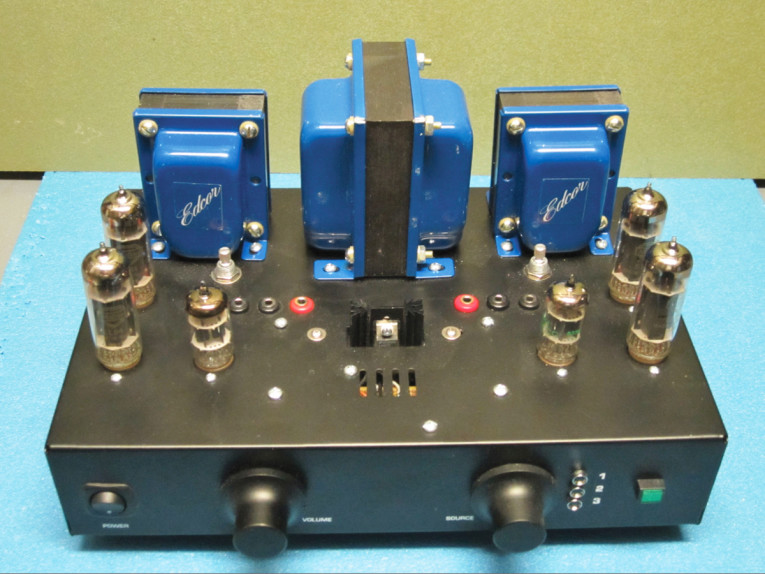
I call the basic design an “Oddwatt” because of its “odd” configuration. It is now used in an entire family of amplifiers up to 45-W RMS per channel. I do need to put in a disclaimer. I am both co-owner and principle designer for Oddwatt Audio, which provides vacuum tube amplifier kits, and its pending VC Audio Labs division. An earlier version of the amplifier has been available as a commercial kit, as are others in the lineup.
The amplifier in this article is an evolutionary step up from the ones currently available. While the original amplifier is excellent, it was designed as a “budget” project for DIYers. It turned out well and has found favor with individuals who use high-efficiency speaker systems. These individuals generally choose single-ended triode (SET) designed amplifiers. Often, they won't even consider using a push-pull pentode-based amplifier―that is, until they hear this one. I have been told on several occasions the Poddwatt sounds like a SET, but better. I leave that up to others to determine. My sense is that its sound quality is related to the design simplicity and the few components that are actually in the signal chain. Enough background. It is time to get into the Poddwatt Series II's details (see Photo 2).
Theory
Because this amplifier operates differently from the vast majority of amplifiers, it’s necessary to go into a fairly in-depth description of how it works. The amplifier has two stages. The first stage is a series (or shunt) regulated push-pull design (SRPP). This configuration is greatly misunderstood in the audio community. (I will not go into detail why.) But if a SRPP is used as a voltage amplifier (there are no current demands on it), it is possible to achieve excellent gain, linearity, low distortion, and good power supply noise rejection.
The second stage combines an old design from about 1948 (a later version was published in 1961) with a somewhat newer twist.[1] The claim that the early versions were hi-fi may have been appropriate at the time, but they fall far short of that now. I suspect the original circuit creators would be amazed by the current performance level. The original designs used pentodes and fixed cathode resistors. Mine uses pentodes in ultralinear mode with a cathode-constant current source. The output stage is self inverting. There is no phase inverter driving it. The SRPP provides a signal to only one output tube.
At first glance, the second output tube seems to have no function, as the grid is tied to the signal ground (via a capacitor and resistors). A small lesson from “Tubes 101” is in order here. The current flow through a tube is controlled by the potential voltage difference between the cathode and grid. If you look at the circuit, the tubes share a common cathode load. I’ll explain how that functions shortly. In a true Class-A amplifier such as this one, the cathode current is constant. So if the “driven” tube gets a signal to increase the current flow, it will simultaneously result in an increase in the voltage at the cathode.
This will increase the voltage between the grid and second tube's cathode (a negative value) and reduce that tube's current flow. Remember, that grid was at ground potential, so a positive increase in the cathode voltage will force it to conduct less. This creates a seesaw-type effect. This action was well known in the past, but it was difficult to use in a hi-fi application.
This brings me to the second part of the circuit. In the 1970s, National Semiconductor introduced a family of solid-state voltage regulators. These are three-terminal devices that resemble power transistors. They can also be used as accurate and robust constant-current sources. So, my design uses one in each cathode circuit to establish the operating point for the stage. Purists would cry foul because I put a solid-state device in a tube amplifier. My response is that I want to reproduce music and I really don’t mind mixing components.
The current level I chose is 82 mA per pair of tubes. This is comfortably within the tubes' dissipation rating at the supply voltage (B+) chosen. The 25-Ω variable resistor in between the cathodes is a balancing device. It enables the shifting of a small amount of DC voltage from one cathode to the other. With fairly matched tubes, this is sufficient to achieve equal current flow though the tubes when idle. The question I am always asked is about “bias” for the tubes. In this design, the question is not relevant. The constant current source (CCS) will automatically adjust the cathode voltage to achieve a correct bias. Combining the SRPP driver/voltage amplifier with a Class-A, pushpull self-inverting output stage (using a constant current source) results in a deceptively simple amplifier that performs well.
Since the first amplifier was built in 2008, I have incorporated a number of refinements. The most obvious is the use of a small positive voltage on both output tube grids. This would seem to be the wrong thing to do and, indeed, in a different design it would be. This small voltage increases the voltage on the cathodes by a similar amount. But because of the CCS, the current remains the same. The voltage’s purpose is to account for the nonlinearity of the LM317 integrated circuit, a popular adjustable voltage regulator, at potentials below 4 V. The effect is that the amplifiers are linear up to maximum output.
An additional change from the earliest amplifiers is the use of a capacitor and resistor in the “slave” output tube’s grid circuit. This also improves linearity, as both tubes then have approximately the same grid impedance. I use a very small amount of negative feedback to ensure amplifier stability. The amount has virtually no effect on the audio range but precludes the exciting of the self-resonant point of the output transformers (roughly 60 kHz).
It also means that the output transformer’s phase is critical and needs to be reversed from normal use. Thus, as astute readers would conclude, the amplifier inverts the signal. The schematics shown in Figure 1 and Figure 2 provide more detail.
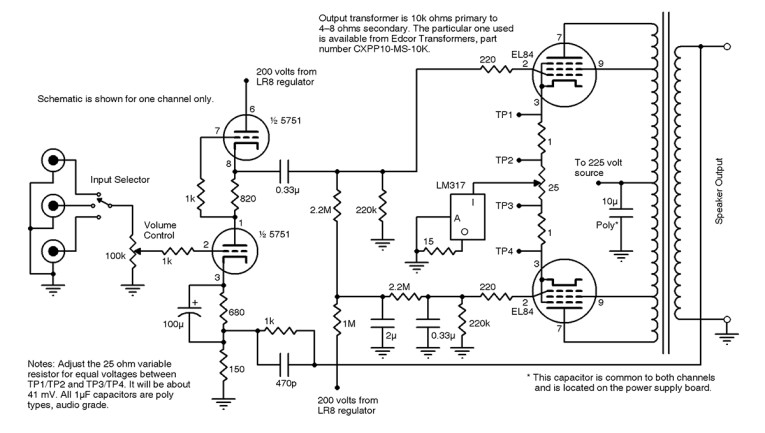
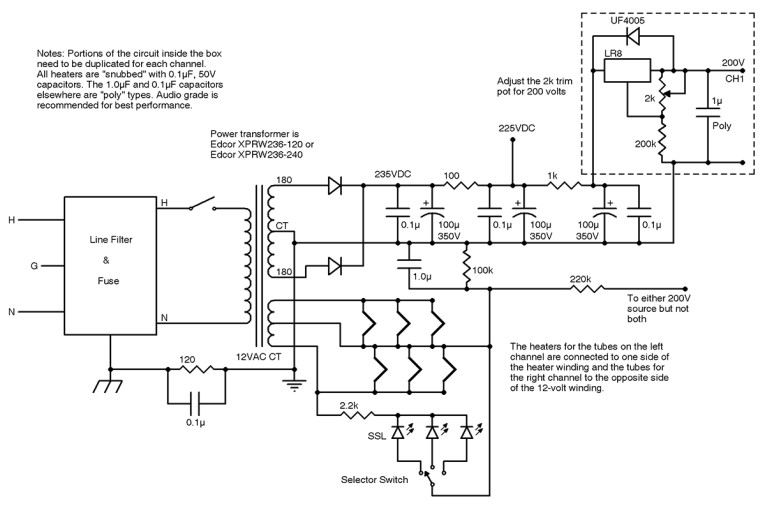
Construction
I admit it. I’m lazy. The project was built on a chassis from one of the early kits (see Photo 3 and Photo 4). After all, it is prepunched and stenciled. A standard-size chassis available from Hammond is all that is necessary. (But if you could see how great I am with a drill press, you would understand why I used the kit chassis.) The top cover is also from the kit, but ones virtually identical to it are also available from Hammond. The amplifier’s layout and construction are not critical; however, good wiring practices are recommended. The amplifier’s interior is shown in Photo 5.
The power supply can be different from the one provided in the schematic as long as the B+ is between about 225 and 250 V and it provides either 6 or 12 AC (with center tap) to the heaters. The Supertex LR8 integrated circuit regulators take care of the lower B+ on the SRPP and are valuable in achieving the high signal-to-noise ratio (SNR) in the power supply.
Additional important considerations include keeping the signal and power conductors separated (and when they cross, doing so at right angles); having the power and output transformers at right angles to each other; using shielded cable from the inputs to the selector switch and volume control; and being aware of ground loops, particularly through the input wires' cable shields. If you use the ground bus, which I'll mention later, only ground one end of the shields. Use quality components, keep heat-producing components away from capacitors, and have generally neat wiring.
Make certain that no portion of the heater circuit is connected to the ground. To prevent tube failure (by exceeding the heater to cathode voltage rating of the SRPP), it is necessary to apply a modest DC reference voltage to the heater circuit. This also reduces the overall noise level in the amplifier by a few decibels.
The heatsinks on the LM317s should be either on top of the chassis or in a location that has vent holes above and below. Use insulating kits on them so they don’t short out with each other (if you use a single, larger heatsink) or short out to the chassis. One watt each of dissipation may not sound like much, but when it is in a confined space (e.g., the chassis), it can easily raise the temperature to a point where some components (e.g., the capacitors) will fail.
Pay attention to the grounding of components and circuitry. I like to use a modified bus arrangement — one bus for all the audio components that originates at the input jacks and a second one that runs through the power supply. I tie both together at the input-jack ground connection. I also run a Type X2 capacitor with a parallel resistor to the chassis from that junction. It is important to prevent ground loops in audio equipment, and this arrangement works well. It also enables the chassis to be a ground potential shield that reduces electromagnetic interference (EMI) pickup. It is a safety device should something internally fail and short out to the chassis. This works best with a three-wire AC main. You may have to adapt the circuit if your system does not have that arrangement or it is prohibited by your electrical codes. In such cases, follow the normal arrangement.
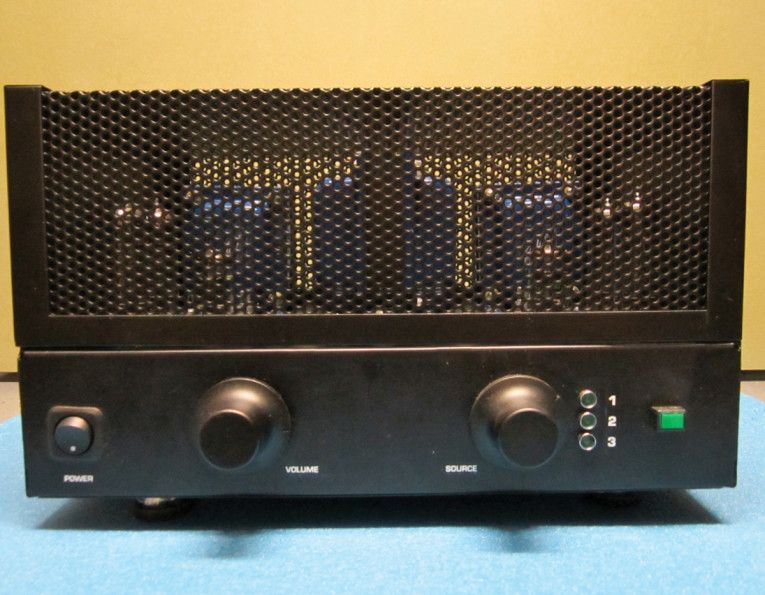
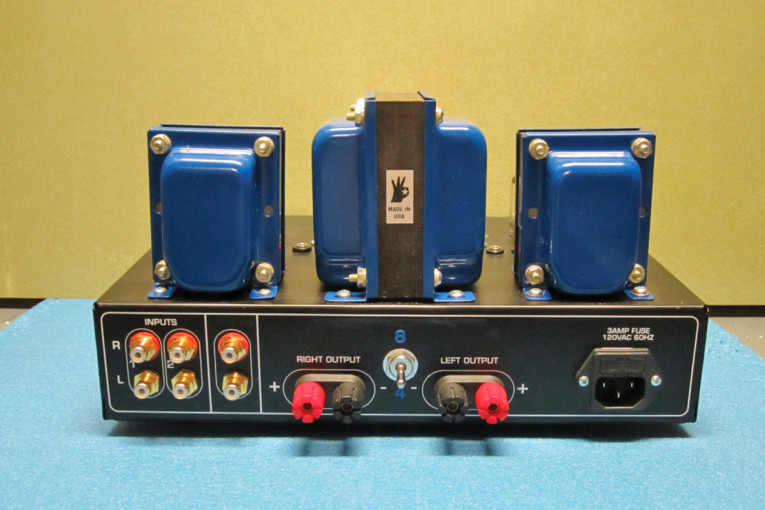
Operation
Before applying power to any equipment for the first time, recheck the circuit. Look for loose components, terminals that somehow didn’t get soldered, short circuits (things touching that shouldn’t), and so forth. There are many ways to first power up something, but the method I prefer is to put in the tubes, fuses, and so forth, turn the power switch to “on,” then (without touching the chassis) plug it in. If it properly heats up, then proceed to set it up. If it blows the fuse, then some additional checking is needed to locate the problem. If it properly powers up, you can proceed to balance the tubes.
At this point, it is not usually necessary to attach speakers or load resistors to the outputs. But it is necessary to ensure the volume control is set at a minimum. Using a digital meter (analog is fine, but not generally as precise), measure the voltage across the 1-Ω cathode resistors. The sum of voltages for each pair should be in the 80-to-85-mV range split in half for each tube. Adjusting the 25-Ω variable resistor should enable you get the two halves equal to within 1 mV.
If the combined reading or either half is more than 85 mV, there is a fault. There are two common problems that can cause this. First, it could be a problem in the grid circuit of one of the EL84 tubes that makes it impossible to balance the pair. Second, it could be incorrect wiring of the LM317. If it is incorrectly connected, it can fail and cause excessive current flow.
Sometimes, you can correct the error and it will be okay. Often though, you will need to also replace the LM317. Fortunately, they are inexpensive. Occasionally, an amplifier’s layout will cause it to be unstable without a load. If you can’t balance the amplifier, then attach either speakers or resistors to the outputs and see if it will then balance. If it comes close but you can’t get equal current flow, turn it off and swap the tubes in that pair. Sometimes, even in matched pairs of tubes, one will not like to have the grid on the ground like the slave tube. If they still won’t balance, then the tubes are not matched enough to use as a pair. Try other combinations with all four tubes. I recommend JJ Tesla and Electro-Harmonix tubes, as they have always balanced well. Others may work.
For the driver tube, the best I have found is the NOS JAN Philips 5751; a close second is the new production Sovtek 5751. You can use any of the 12AX7 types, but I did not find any that sounded as good as the 5751s. The new JJ 5751 (from JJ Electronics, formerly Tesla) does not work well in this amplifier. The prototypes measure 10 Hz to 30 kHz ±0.5 db at any power up to 4-W RMS. Distortion is between 0.2% and 0.5% at any frequency between 20 Hz and 20 kHz at 1 W. It reaches 1% at 4-W RMS. Signal-to-noise is 87 db below 1 W. I rate the maximum output at 4 W per channel, but a few more are available with increasing distortion.
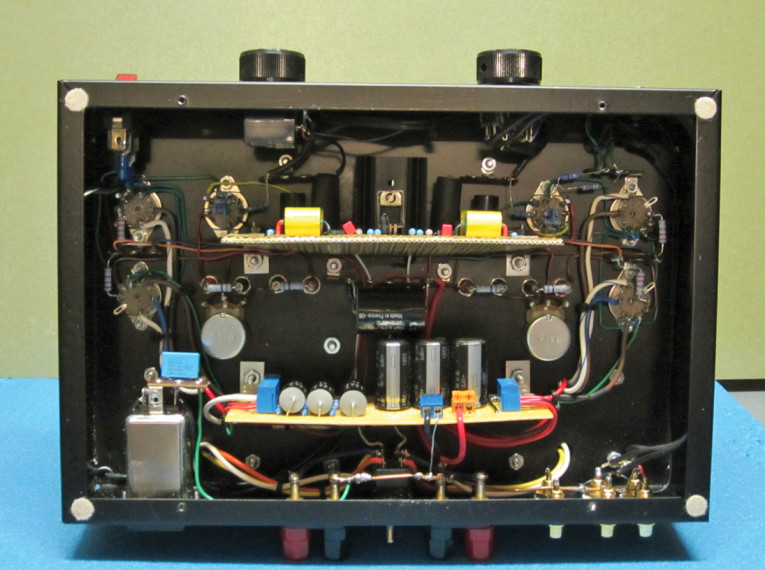
Listening
At this point, you are ready to use the amplifier. I recommend using full-range speaker systems with a 90-db/W sensitivity for best results in average-sized rooms. If built using the components shown in the schematic (particularly the output transformers), you have an amplifier that can accurately reproduce music with exceptionally low distortion and low noise. I have used it on numerous speaker systems, including my potentially difficult-to-drive MartinLogan Vista Electrostatic. They provide almost a purely capacitive load at high frequencies. There are no problems; they just sound great.
If your amplifier doesn’t work this way, then something is not right. The most common error is the output transformer’s phase (mentioned earlier). The amplifier will work but sound shrill. To fix that, you will need to swap the anode and screen grid leads from one output tube to the other. Good listening. aX
References
[1] M. Leibowitz, “Compact Hi-Fi Power Amplifier,” Electronics World, 1961.
Resource
Oddwatt Audio, oddwattaudio.com
This article was originally published in audioXpress, May 2013.


